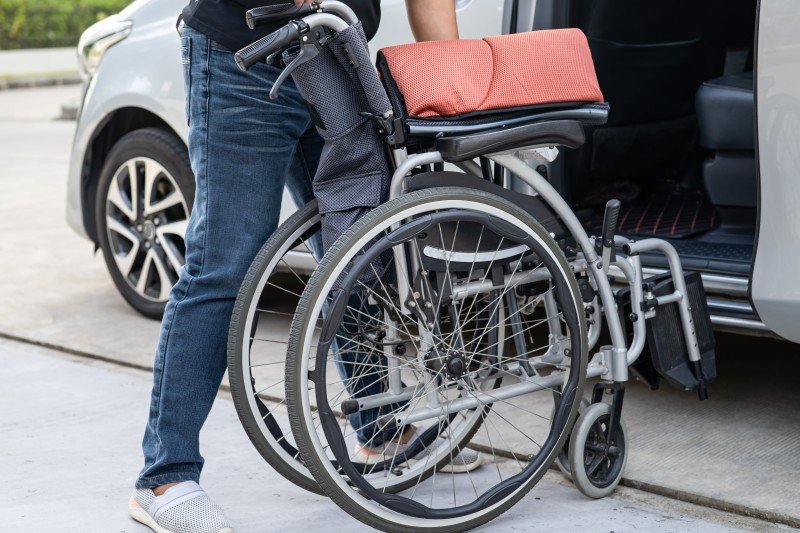Navigating the World of Mobility Scooters: A Comprehensive Guide
In a period where mobility is increasingly recognized as a basic element of lifestyle, the need for assistive devices has actually risen. Among these, mobility scooters stand apart as a versatile and empowering alternative for individuals with mobility difficulties. This comprehensive guide dives into the world of mobility scooters, providing insights into their types, benefits, purchasing considerations, and upkeep suggestions.
Understanding Mobility Scooters
Mobility scooters are motorized automobiles designed to help individuals with mobility problems in moving more freely and separately. They are especially useful for those who discover strolling difficult due to conditions such as arthritis, multiple sclerosis, or post-surgical recovery. Unlike manual wheelchairs, mobility scooters require minimal physical effort, making them an exceptional option for extended usage.
Kinds Of Mobility Scooters
Three-Wheel Scooters
- Pros: More maneuverable, lighter, and easier to store.
- Cons: Less steady on rough terrain.
- Best For: Indoor and smooth outside surface areas.
Four-Wheel Scooters
- Pros: More steady, better on rough surface, and can carry much heavier loads.
- Cons: Bulkier and less maneuverable.
- Best For: Outdoor use, especially in parks and on irregular surfaces.
Portable Scooters
- Pros: Lightweight, collapsible, and simple to transport.
- Cons: Limited range and speed.
- Best For: Travel and occasional use.
Heavy-Duty Scooters
- Pros: Built to manage much heavier users and rugged environments.
- Cons: More pricey and less portable.
- Best For: Users over 300 pounds or those who need to navigate rough terrain.
Standing Scooters
- Pros: Provide a standing position, which can be helpful for users who can not sit for extended periods.
- Cons: Limited stability and variety.
- Best For: Users who prefer standing and need short-distance assistance.
Benefits of Mobility Scooters
Boosted Independence
- Mobility scooters enable users to travel longer ranges without fatigue, allowing them to participate more completely in everyday activities and social events.
Improved Safety
- With functions like safety belt, anti-tip wheels, and brake systems, mobility scooters provide a safer alternative to manual wheelchairs and strolling aids.
Comfort and Support
- Adjustable seats, back-rests, and armrests ensure a comfortable trip, minimizing the stress on the user's body.
Affordable
- While the initial investment can be considerable, mobility scooters are frequently more cost-effective in the long run compared to frequent taxi trips or specialized transport services.
Social Inclusion
- Mobility scooters assist in greater social interaction by enabling users to take part in community activities and keep a more active lifestyle.
Factors to Consider When Buying a Mobility Scooter
User Needs and Abilities
- Assess the user's physical condition, mobility requirements, and everyday activities to identify the most ideal type of scooter.
Size and Weight Capacity
- Make sure the scooter can accommodate the user's size and weight conveniently and safely.
Range and Speed
- Think about the common distance and speed required for daily usage. best mobility scooter uk have a variety of as much as 30 miles on a single charge.
Portability
- If travel is a priority, go with a portable scooter that can be easily dismantled and transferred.
Upkeep and Support
- Pick a reputable producer that offers reliable customer care and upkeep support.
Budget plan
- Set a budget and check out options that offer the best value for money. Consider funding alternatives and possible insurance protection.
Maintenance Tips for Mobility Scooters
Regular Cleaning
- Clean the scooter regularly to avoid dirt and debris from affecting its efficiency. Use a soft cloth and moderate detergent.
Battery Maintenance
- Follow the manufacturer's standards for battery charging and maintenance. Routinely examine the battery level and prevent deep discharges.
Tire Inspection
- Examine the tires for wear and correct inflation. Change or repair as needed to ensure a smooth and safe trip.
Lubrication
- Lube moving parts such as the chain and equipments to decrease friction and prevent wear.
Professional Servicing
- Set up routine professional maintenance to address any issues and ensure the scooter stays in ideal condition.
Frequently Asked Questions About Mobility Scooters
Are mobility scooters covered by insurance coverage?
- Some insurance plans, consisting of Medicare, may cover the expense of mobility scooters under specific conditions. Talk to your company for particular information.
Can I utilize a mobility scooter inside?
- Yes, lots of mobility scooters are designed for both indoor and outside usage. Ensure the scooter is appropriate for the type of surfaces you will be browsing.
How fast can mobility scooters go?
- The speed differs by design, but many mobility scooters have an optimal speed of 4 to 8 miles per hour.
Do I need a license to run a mobility scooter?
- In a lot of countries, a license is not needed to run a mobility scooter. Nevertheless, it is important to follow local guidelines and traffic laws.
Can I take a trip with a mobility scooter?
- Numerous mobility scooters are developed to be portable and can be taken apart for travel. Contact airlines and transport companies for particular requirements.
Mobility scooters are a transformative tool for people with mobility obstacles, using a blend of independence, safety, and convenience. By understanding the different types of scooters, considering crucial buying aspects, and following maintenance best practices, users can make the many of their mobility scooter and lead a more active and fulfilling life. Whether for everyday commutes or leisurely outings, a well-chosen mobility scooter can be an important companion on the journey to boosted mobility and lifestyle.

